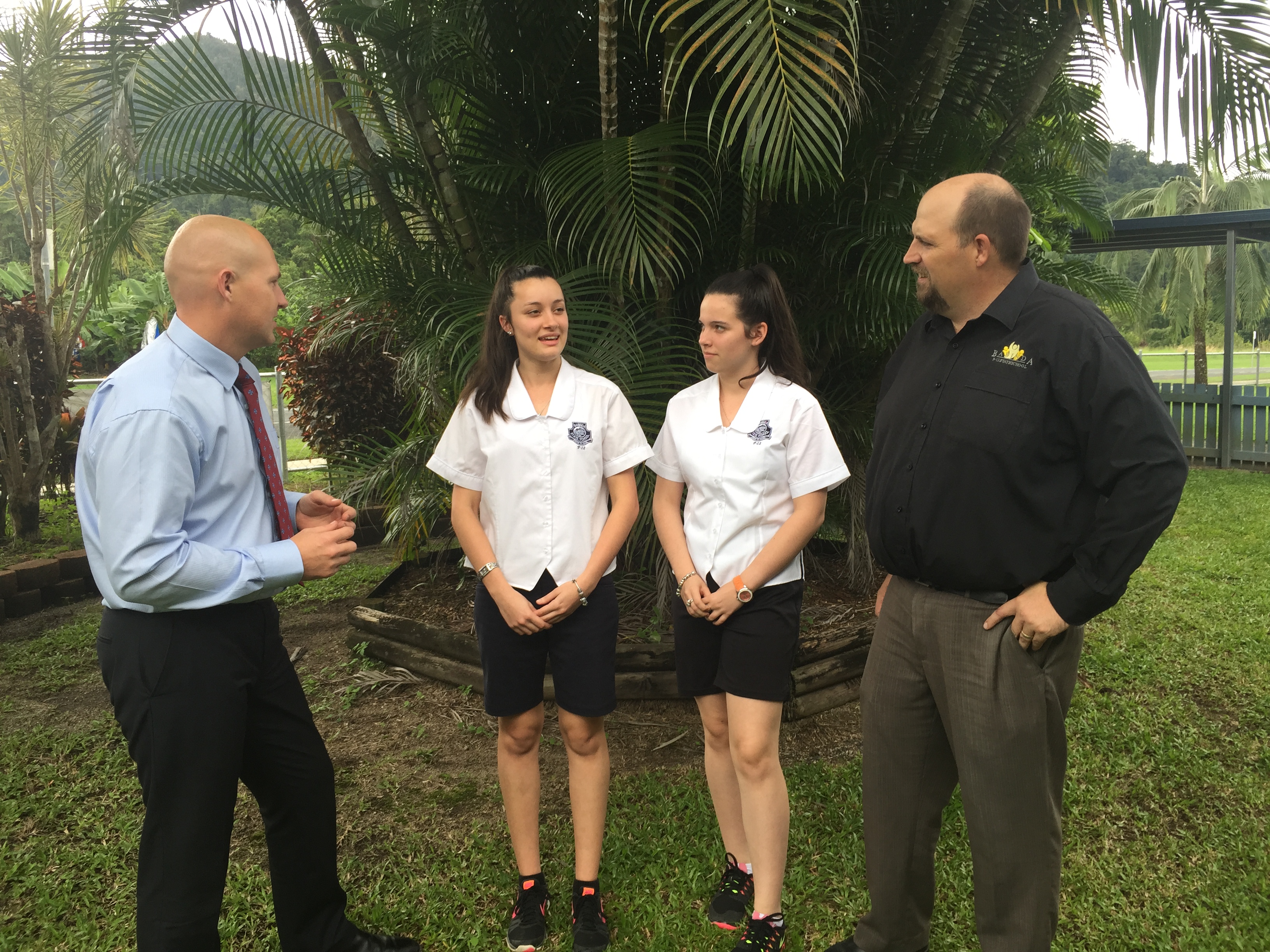
基本資料 | Information
In 1912 the population of Babinda was about 100 and any education given to the children would have been given by the parents or private tutors. Prior to the school in Babinda some children were travelling by train to McDonnell Creek leaving at 6.00 am and arriving back home at 6.30 pm making it a long day.
With the construction of the sugar mill in 1914 there was an influx of families from the mining communities of Chillagoe and Mungana area and so the need for a school became apparent. On 13 April 1914 twelve parents with 27 school aged children petitioned the Minister of education pointing out the need for a school. These petitioners were led by J Maroney who owned the Babinda Creek Hotel. On 20 June 1914 a list of over fifty children was forwarded to the Minister. On 6 November 1914, Mr Sam Favell advised the Department of Education that he had opened the Babinda State School in the hall next to the Babinda Creek Hotel and that he had 33 children on the roll. The school furniture consisted of four desks and a couple of boards nailed together as a makeshift blackboard. He strongly urged that the school be built as early as possible as the hall would not be available in the new year. The District Inspector, Mr B. McKenna reported on 24 November 1914, that the temporary building occupied by the mill manager would soon be vacant and he recommended that the department take immediate steps to secure it for a school.
The 1915 school year commenced in this structure. The floor was a wooden platform and walls half way up were of wood whilst the remainder was of canvas. The roof was canvas covered by an iron awning. The first seats were eight boards obtained from the saw mill. Due to the dangers of conducting school in the sugar mill yard during crushing, the school was forced to move again to a site south of the present Babinda Hotel.
The new school building in Church Street was completed early in 1916 and remained at the site until 1969 when the school was established on the present site. Some historical details are:
The number of students enrolled at the school by 1920 was 120 students.
The school in Church Street consisted of two classrooms and two verandahs.
In 1921 two more classrooms were added and by 1933 another two rooms were built.
In 1934, the available classroom space was further expanded with the construction of the Manual Training and Domestic Science buildings.
The secondary department was opened on 19 June 1963.
After the school was transferred to the present site, the old buildings were put to public tender. As a result of this:
The oldest and original building was taken over by the then Mulgrave Shire Council and re-erected at the Showgrounds and is now known as the Warren Jensen Memorial building.
The western wing of the school was purchased by the Church of England and transferred to the back of their allotment to become their hall.
Mr George Russell purchased the eastern section. This was demolished for materials some of which was used for construction of a shed at the rear of his residence in Jago Street.
The manual training building was purchased by the boy scouts and transferred to their site in Munro Street.
The domestic science building remained where it was and is now the Kindergarten.
The manual training and domestic science buildings were used by the Secondary department when it opened in 1963 until about 1970. So during this time the students had to walk from the high school to participate in these lessons.
The two office buildings were given to Bellenden Ker contractors in appreciation for their services of transferring the classrooms to their new sites and these office buildings were used to build cottages at Cucania which is in the Bellenden Ker district.
A Preschool was opened in the present grounds on 15 October, 1980 and in 1983 the Secondary department expanded to include senior for the first time.
